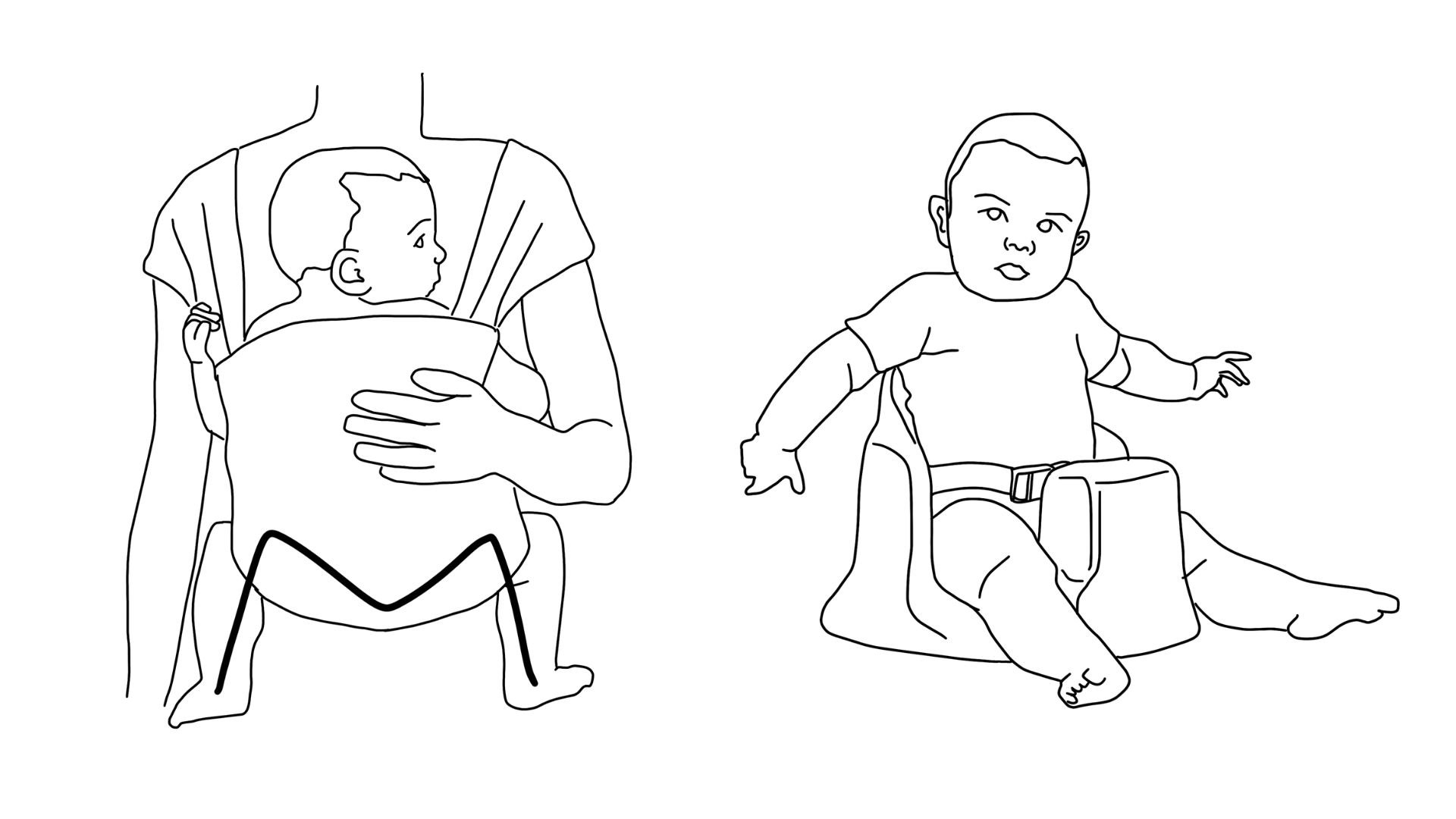Baby Wearing vs. Baby Seats: Understanding Positioning Differences
Last week, a thought-provoking question came my way—one that I had never been asked before. It pertained to the contrasting recommendations for baby positioning in baby wearing and baby seats. As we delve into this topic, we'll explore the ideal positions and the underlying reasons behind them. So, let's buckle up and embark on a journey to unravel the mysteries of ergonomic baby positioning!
Baby Wearing: Hips Lower than Knees
During the first six months, the recommended position for baby wearing involves facing your baby inward, with their knees positioned higher than their hips. This positioning stems from the rapid development of the hip joint during this crucial period. When your baby is in the M-position, their muscles activate to evenly press the ball of the hip joint into the center of the hip socket. Additionally, the compression exerted by the baby wearing device further aids in creating a supportive environment.
Baby Seats: Knees Lower than Hips
Contrarily, when it comes to baby seats, the recommended position entails having the knees positioned lower than the hips.
Here, we encounter a few fundamental differences between baby wearing devices and baby seats.
Varied Compressive Factors: Baby wearing involves unique compressive factors that differ from those present when sitting in a baby seat. The forces of gravity impact your baby's body and joints differently in these two positions due to the varying types of body support provided. As a result, the duration and intensity of pressure on their hips and spine also vary.
Age and Duration of Use: Babies often begin using carriers at an early age and spend extended periods in them. Therefore, proper positioning becomes paramount to their comfort and development. On the other hand, the use of baby seats typically starts around four months or later, and the duration of use is comparatively shorter.
Subtle Pelvic Tilt: In a baby seat, the "hips higher than knees" position is subtly different from sitting on the floor. This slight tilt of the pelvis facilitates comfortable upright sitting. When the knees are higher than the hips in a sitting position, it can cause the baby to slouch, impeding their ability to sit up independently since their trunk and upper body lack proper support.
Understanding the rationale behind the varying recommendations for baby positioning in baby-wearing and baby seats sheds light on the distinctive factors at play. The rapid hip development during the first six months drives the specific positioning requirements for baby-wearing. Meanwhile, the subtle pelvic tilt in baby seats promotes proper sitting posture. By comprehending these nuances, you can ensure your baby's comfort, support their development, and make informed choices regarding their positioning.
Remember, every baby is unique, and consulting with healthcare professionals can provide personalized guidance based on your child's specific needs.
Check out the book…
P.S. This information is for educational purposes only. It is not medical advice and is not a substitute for skilled physical therapy intervention. While I am a physical therapist, I am not your child's physical therapist. If you have questions or concerns about your child's health and/or development, please contact your pediatrician.
When you shop using the links above, Physical Therapy for Infants earns a very small portion of what you spend at no additional cost to you.


